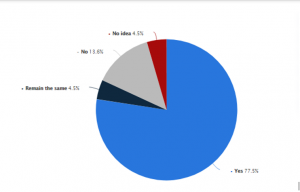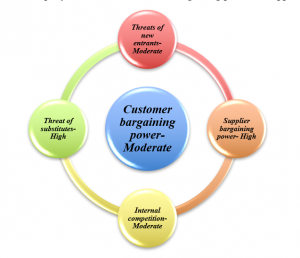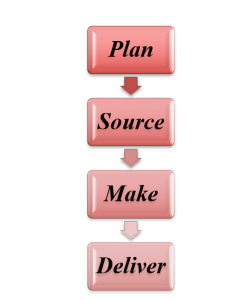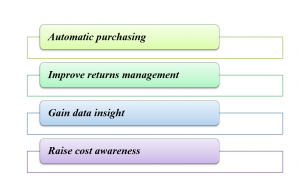Here is sample for “MOD007698 Supply Chain Management”
Introduction
Nina Van Diest is a chocolatier who is currently prepared to develop her vegan chocolate by starting her own personally funded business. This study aims to define how to establish a global supply chain for Nina Van Diest chocolatier after a brief analysis of the current scenario of her business. In addition, a conclusion of the overall study followed by a clear set of recommendations for establishing a supply chain has been discussed in the study.
Scenario Analysis
Current situation
It can be identified that Nina Van Diest is a chocolatier who used to work previously at one of the largest food-producing companies in Europe. Along with that, she was also based in the development centre of food in Paris working for MyscoBee Corporation for more than 20 years. Nina developed the idea of producing vegan chocolate which was neglected by the organisation management as they did not see any future prospects in the product. As a result of this negligence, Nina left the corporation to start her own business that was personally funded by her. After dedicating 5 years of her life to her small kitchen Nina managed to develop her vegan chocolate by selling it to nearby shops in her hometown in Belgium. The product sales were slowly increasing which led her to purchase a small scale manufacturing facility to increase her production capacity. However, the fact that she has to purchase second-hand manufacturing equipment that is old and broken often is a disadvantage for her business.
Current capabilities and opportunities within supply chain management
The current capabilities within the supply chain management of the company can be identified as the approach made by a Californian for the further expansion and ownership of the business. However, the problem faced in this case is to develop a suitable supply chain strategy for the management of the growth of the company. The next capability and opportunity within the supply chain management is the exhibition and conference that demonstrated the benefits of industry 4.0 of food production along with the supply chain. Ivanov and Dolgui (2020) state that industry 4.0 enables direct sales that can be used as an effective management capability for logistics and production operations. On the other hand, it can be identified that customer orders for the product of the business are increasing in size and production which is an opportunity. Along with that, the quantities of potential orders cannot be managed by the current ordering system and the team as it is known that Nina is not an expert in supply chain management.

Figure 1: Increase in the interest of vegan chocolate
(Source: Statista.com, 2020)
The increasing demand for her product is making her worry whether she can meet her future orders or not despite it being a great opportunity for her business. On the other hand, investigating using Fairtrade suppliers or purchasing cocoa beans from farmers of developing countries directly can also add complexity to the supply chain. It can be identified that the need to create a robust supply chain is necessary for the development and growth of the organisation. In addition, for proving to the financial investors of the company regarding its future prospects, a robust plan that details the supply chain strategy must be present (Dubet et al. 2020). Therefore, it can be identified that the opportunities and capabilities with the future growth of the company will be achieved by it if a suitable supply chain strategy is developed.
Supply chain strategies
The case study could establish a global supply chain with the help of effective research by conducting a PORTER’S five forces and SCOR analysis to ensure a smooth designing, manufacturing, packaging and transportation.
PORTER’S five forces
Threats of new entrants- Moderate
The threats of a new entrant for the business can be identified as moderate considering the fact the business is not as big as multinational corporations that have an already efficient global supply chain. However, it is also important to understand that even if new entrants were to enter the market of the business, it would take a lot of time for them to match the current state of the business and set a similar customer base (Fisher and Kordupleski, 2019).
Supplier bargaining power- High
It is important to understand that the company is trying to develop an effective supply chain management strategy that requires cooperation with its business supplier the most. The reason behind this is that no contact with suppliers for the long term prospect of the business has been done. This might give the suppliers of the business to opt for a higher price as compared to what is suitable for the company to bear. Therefore, the bargaining power of suppliers is high.

Figure 2: PORTER’S five forces
(Source: Created by author)
Internal competition- Moderate
The competitors of the business can be identified as Ritter Sport Marzipan, Rhythm 108, Oatly Oat Drink Chocolate and Livia’s Vegan Chocolate. In addition, it is important to understand that these brands already have a secure base of loyal customers that might be hard for the business to compete with (Peta.org.uk, 2020). However, the increasing demand for the products of the business is an advantage for the brand.
Threat of substitutes- High
The threat of substitutes for the business is high due to the presence of a number of competitors in the market. Therefore, it is important that the business is able to develop strategies to ensure that its customers prefer them over other brands. This would have an impact on the company structure by having to make its product more unique so they are hard to substitute.
Customer bargaining power- Moderate
The customer bargaining power of the business is low as they might not be able to influence the prices of the products of the brand highly. In addition, the fact that the company has not been able to set itself completely in the market is another contributing factor. However, the increasing demand for the product is an advantage in this case. Therefore, it can be stated that the customer bargain power of the business is moderate.
SCOR Analysis
Plan: It is important that the business is able to plan out its strategies based on the mission and vision they have. This will enable them to ensure that their plan is linked to their business strategy and suppliers are also aware of it. This has great impact within the industry and helps for expanding business among in competition market.
Source: The next important part can be identified as sourcing the necessary materials that will be required for the effective conduction of the business plan (Dubet et al. 2020). In addition, looking after the requirements of the business along with the suppliers is also identified important in this case.

Figure 3: SCOR model
(Source: Created by author)
Make: The next part of the plan is to make use of management to improve communication in the supply chain by implementing the plan.
Deliver: The delivery of the plan to fulfil the needs of the customers of the business is the final stage of the model. This states that the most important thing in the model is to ensure customer satisfaction along with the maintenance of supply chain management. Appropriate deliver of products helps for increasing the rate of customer satisfaction and attract various customer towards industry.
Strategy reference to advantages and disadvantages to supply chain
| Advantages | Disadvantages | |
| Supply chain outsourcing | ● Saving time
● Reducing costs (Cohen and Lee, 2020) |
● Loss of managerial control
● Quality issues ● Hidden costs |
| Risk management | ● Easier to spot troubled projects
● Communication is elevated |
● Expensive
● Data security issues ● Training costs |
| Competitor analysis | ● Better targeting customers (Grover et al. 2018)
● Market potential forecasting |
● Overestimation
● Reduce enthusiasm |
| Impact of future technology | ● Data security
● Saves time ● Better communication |
● Increased dependency
● Risk of job cuts (Birkel et al. 2018) |
Table 1: Advantages and disadvantages to supply chain
Supply chain risk management
Supply chain risk management can be defined as the process of assessing, identifying and mitigating the risks of the supply chain of Nina’s business. The different types of risks and the strategies to use to prevent and mitigate them are as follows:
| Risks | Impacts of risk | Strategies |
| Strategy risk | ● Barriers in company expansion
● Inability to grow and develop |
● Define company strategy and stick by it
● Identify and qualify the right suppliers (Longoni et al. 2019) |
| Market risk | ● Affect on performance
● Financial loss (Brooks and Oikonomou, 2018) ● Effect on the financial strength
|
● Creation of a tolerance margin for product line’s quality standards
● Monitor lines to detect early warning signs |
| Implementation risk | ● Poor supply chain management
● Company downfall |
● Engage in new suppliers (Marconi et al. 2017)
● Identify factors affecting the implementation process |
| Performance risk | ● Low employee retention rates
● Competition |
● Continuous monitoring of suppliers
● Use of monitoring technology (Ivanov and Dolgui, 2020) |
| Demand risk | ● Loss in revenue
● Customer dissatisfaction (Hong et al. 2019) |
● Supply chain risk management to form an integral part of good practices
● Address risks from the onset and review risks |
Table 2: Risk management
Technology to aid the company
There are several tools and technologies such as IoT, AI and management software that can be used by the company to aid its supply chain and ensure smooth management. Shim et al. (2019) opine that the Internet of Things is an interconnected physical device that can report, monitor and exchange data in a systematic manner. It can be identified as an effective way of tracking and authenticating products in the supply chain along with managing shipment using other technology such as GPS. It can also monitor storage conditions of products which also contribute to quality management as well throughout the supply chain of the business. Dumitrascu et al. (2020) state that the benefits of artificial intelligence in the supply chain are warehouse efficiency and safety, on-time delivery, reduced operation cost and accurate inventory management. The reason behind this is that artificial intelligence has the power of anticipating orders along with manage deliveries which increases efficiency in several areas of a supply chain. Apart from that, supply chain management software can also be suggested for the business as it can facilitate the execution of supplies and transactions, control associated business processes and manage superior relationships of the business.
Effect of different strategies to different supply parts (A- advantage and D- disadvantage)
| Parts of the supply chain | Agile supply chain strategy | Lean supply chain strategy | Hybrid (Lean and Agile) supply chain strategy |
| Manufacturing | A- Customer focused product design
D- Short product life cycle |
A- Waste elimination (Ghezzi, 2019)
D- Low margin |
A- Customer focused
D- Inadequate focus on product |
| Transportation | A- N/A
D- Management for different manufacturing locations is challenging |
A- Worker satisfaction
D- Frustration |
A- Resource management
D- Hectic schedule |
| Distribution | A- Cooperation (Gyarmathy et al. 2020)
D- Planning is difficult |
A- Management of time
D- Inefficiencies due to split of potential markets |
A- Successful supply chain management
D- Requires effective cooperation |
| End customer | A- Connected IT
D- Product process design |
A- Product reach on time
D- Insufficient raw materials |
A- Customer satisfaction (Lalmi et al. 2021)
D- Unsatisfactory product |
Table 3: Effect of different strategies on different supply parts
Conclusion and recommendations
The most important opportunity that the business of Nina currently has is the fact that there is an increasing demand for her products by its customers. It is important to understand that with a demand like this, the perspectives of the company are bound to develop. Apart from that, this demand can also help the business to optimise labour management, create cash flow management and improve product forecast accuracy. However, the implementation of an efficient supply chain management strategy is important for the company to make use of this opportunity. The lean supply chain management strategy can be suggested for the business as it is ideal considering the requirements of the business. In addition, the fact that it shall also help in waste elimination can help the business to look after it’s environmental and sustainability factors. Therefore, it can be concluded that the implementation of technologies such as AI, IoT and supply chain management software can facilitate business operations management.
Recommendations
- Automatic purchasing
It can be understood with automatic purchasing that it is possible to program the ERP software to automatically place orders to vendors when inventory becomes low. This can be suggested for the business Nina as she is not confident of managing the supply chain effectively. This will help her to ensure a part of her supply chain management is handled in an automatic manner (Tieman and Darun, 2017).
- Improve returns management
It is important that the supply chain management strategy of Nina’s business has an effective returns management system. Handling returns in order to be able to re-manufacture returned units or products can be extremely beneficial for the business.

Figure 4: Recommendations for the business
(Source: Created by author)
- Gain data insight
The dependency of decision making and strategy of the supply chain is highly dependent on timely data and accurate information. ERP software shall allow management and users to receive instant access to inventory and make critical decision making easier.
- Raise cost awareness
It can be stated that the need to raise awareness regarding cost is important for the business to ensure that a strict budget is maintained at all costs. This step is extremely essential at the initial stage of the supply management strategy development and implementation.
References
Birkel, H.S., Veile, J.W., Müller, J.M., Hartmann, E. and Voigt, K.I., (2019). Development of a risk framework for Industry 4.0 in the context of sustainability for established manufacturers. Sustainability, 11(2), p.384.
Brooks, C. and Oikonomou, I., (2018). The effects of environmental, social and governance disclosures and performance on firm value: A review of the literature in accounting and finance. The British Accounting Review, 50(1), pp.1-15.
Cohen, M.A. and Lee, H.L., (2020). Designing the right global supply chain network. Manufacturing & Service Operations Management, 22(1), pp.15-24.
Dubey, R., Gunasekaran, A., Bryde, D.J., Dwivedi, Y.K. and Papadopoulos, T., (2020). Blockchain technology for enhancing swift-trust, collaboration and resilience within a humanitarian supply chain setting. International Journal of Production Research, 58(11), pp.3381-3398.
Dumitrascu, O., Dumitrascu, M. and Dobrotǎ, D., (2020). Performance evaluation for a sustainable supply chain management system in the automotive industry using artificial intelligence. Processes, 8(11), p.1384.
Fisher, N.I. and Kordupleski, R.E., (2019). Good and bad market research: A critical review of Net Promoter Score. Applied Stochastic Models in Business and Industry, 35(1), pp.138-151.
Ghezzi, A., (2019). Digital startups and the adoption and implementation of Lean Startup Approaches: Effectuation, Bricolage and Opportunity Creation in practice. Technological Forecasting and Social Change, 146, pp.945-960.
Grover, V., Chiang, R.H., Liang, T.P. and Zhang, D., (2018). Creating strategic business value from big data analytics: A research framework. Journal of Management Information Systems, 35(2), pp.388-423.
Gyarmathy, A., Peszynski, K. and Young, L., (2020). Theoretical framework for a local, agile supply chain to create innovative product closer to end-user: onshore-offshore debate. Operations and Supply Chain Management: An International Journal, 13(2), pp.108-122.
Hong, J.H., Kim, B.C. and Park, K.S., (2019). Optimal risk management for the sharing economy with stranger danger and service quality. European Journal of Operational Research, 279(3), pp.1024-1035.
Ivanov, D. and Dolgui, A., (2020). A digital supply chain twin for managing the disruption risks and resilience in the era of Industry 4.0. Production Planning & Control, pp.1-14.
Lalmi, A., Fernandes, G. and Souad, S.B., (2021). A conceptual hybrid project management model for construction projects. Procedia Computer Science, 181, pp.921-930.
Longoni, A., Luzzini, D., Pullman, M. and Habiague, M., (2019). Business for society is society’s business: tension management in a migrant integration supply chain. Journal of Supply Chain Management, 55(4), pp.3-33.
Marconi, M., Marilungo, E., Papetti, A. and Germani, M., (2017). Traceability as a means to investigate supply chain sustainability: the real case of a leather shoe supply chain. International Journal of Production Research, 55(22), pp.6638-6652.
Pet.org.uk, (2020). Vegan Chocolate: 19 of the Best Chocolate Fixes. Available from: https://www.peta.org.uk/blog/15-of-the-best-vegan-chocolate-fixes-and-where-to-buy-them/ [Accessed on 14/11/2021]
Shim, J.P., Avital, M., Dennis, A.R., Rossi, M., Sørensen, C. and French, A., (2019). The transformative effect of the internet of things on business and society. Communications of the Association for Information Systems, 44(1), p.5.
Statista.com, (2020). Do you believe the interest in vegan chocolate will increase? Available from: https://www.statista.com/statistics/1095036/interest-in-vegan-chocolate-in-belgium/ [Accessed on 14/11/2021]
Tieman, M. and Darun, M.R., (2017). Leveraging blockchain technology for halal supply chains. ICR Journal, 8(4), pp.547-550.
Bibliography
Alkahtani, M., Omair, M., Khalid, Q.S., Hussain, G., Ahmad, I. and Pruncu, C., (2021). A covid-19 supply chain management strategy based on variable production under uncertain environment conditions. International Journal of Environmental Research and Public Health, 18(4), p.1662.
Maemunah, S. and Cuaca, H., (2021). Influence of epidemic COVID–19 on business strategy, information technology and supply chain agility to firm performance in medical device industry. Linguistics and Culture Review, 5(S1), pp.661-669.
Marimin, M., Wibisono, A. and Darmawan, M.A., (2017). Decision support system for natural rubber supply chain management performance measurement: A sustainable balanced scorecard approach. International Journal of Supply Chain Management, 6(2), pp.60-74.
Sarkar, B., Dey, B.K., Sarkar, M. and AlArjani, A., (2021). A Sustainable Online-to-Offline (O2O) Retailing Strategy for a Supply Chain Management under Controllable Lead Time and Variable Demand. Sustainability, 13(4), p.1756.
Zaridis, A., Vlachos, I. and Bourlakis, M., (2021). SMEs strategy and scale constraints impact on agri-food supply chain collaboration and firm performance. Production Planning & Control, 32(14), pp.1165-1178.
Zimon, D., Tyan, J. and Sroufe, R., (2019). Implementing sustainable supply chain management: Reactive, cooperative, and dynamic models. Sustainability, 11(24), p.7227.
Know more about UniqueSubmission’s other writing services:

